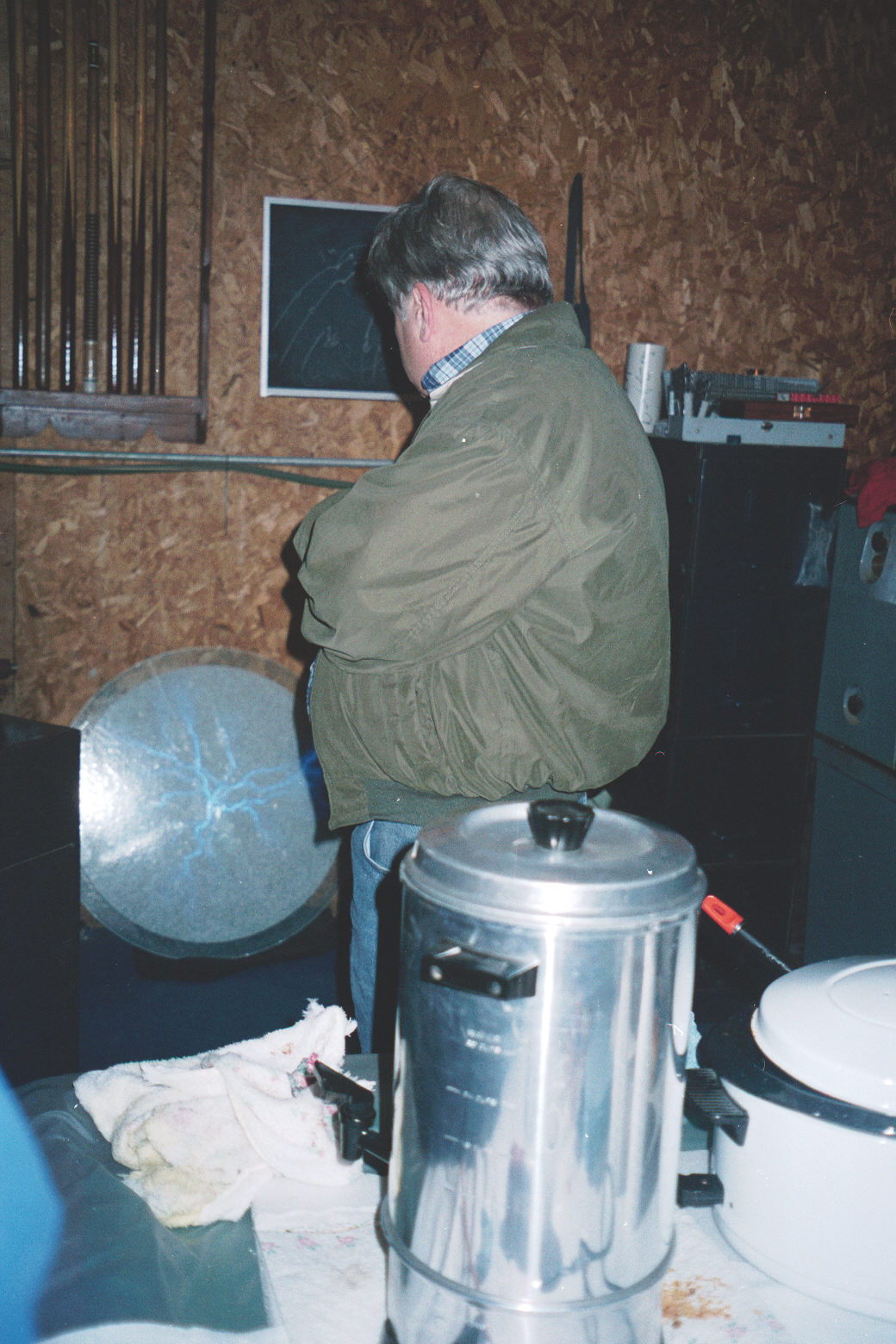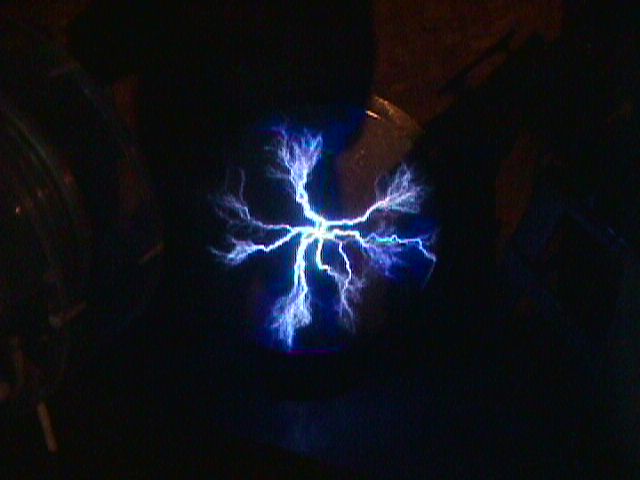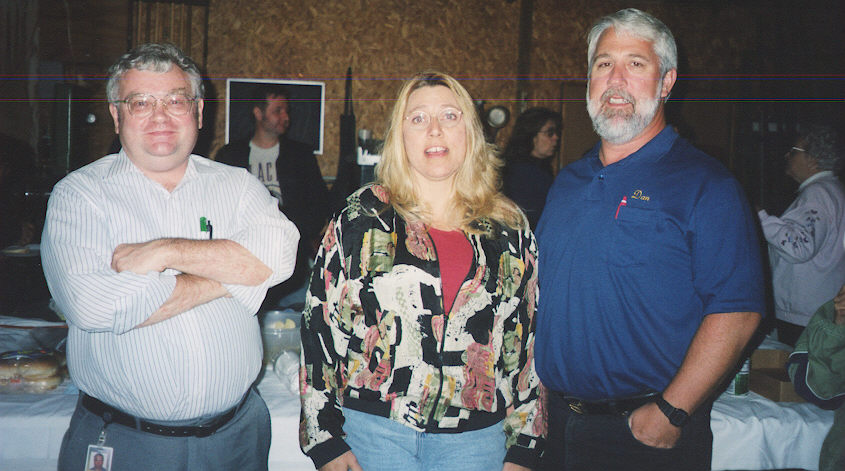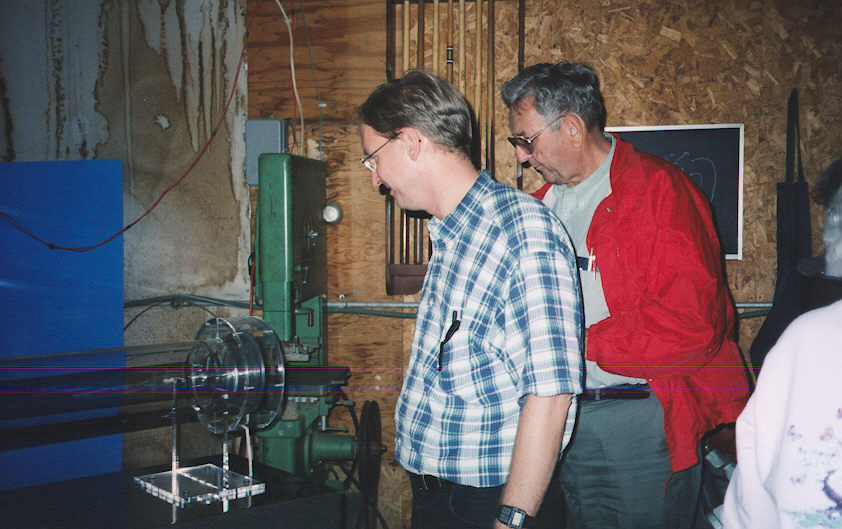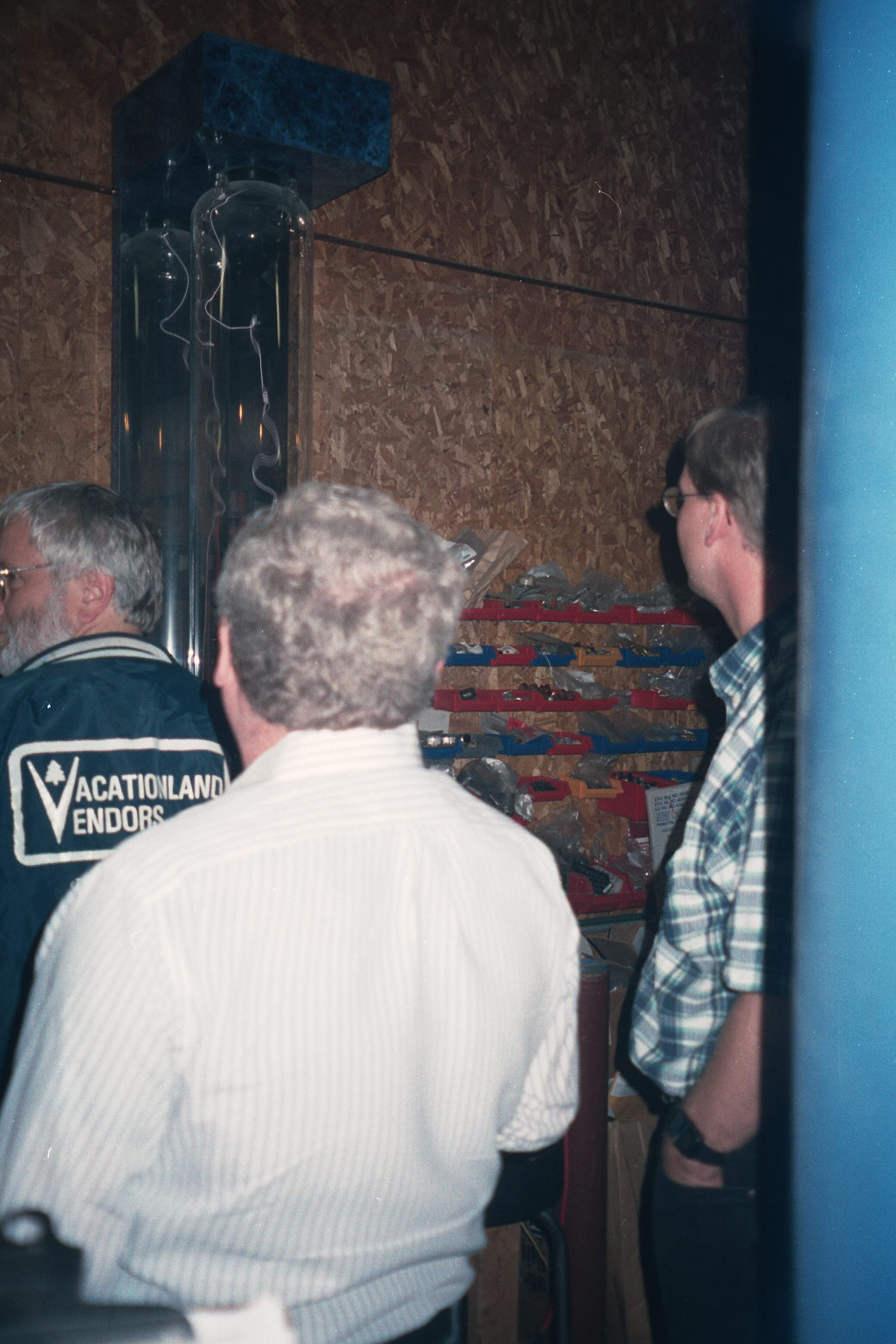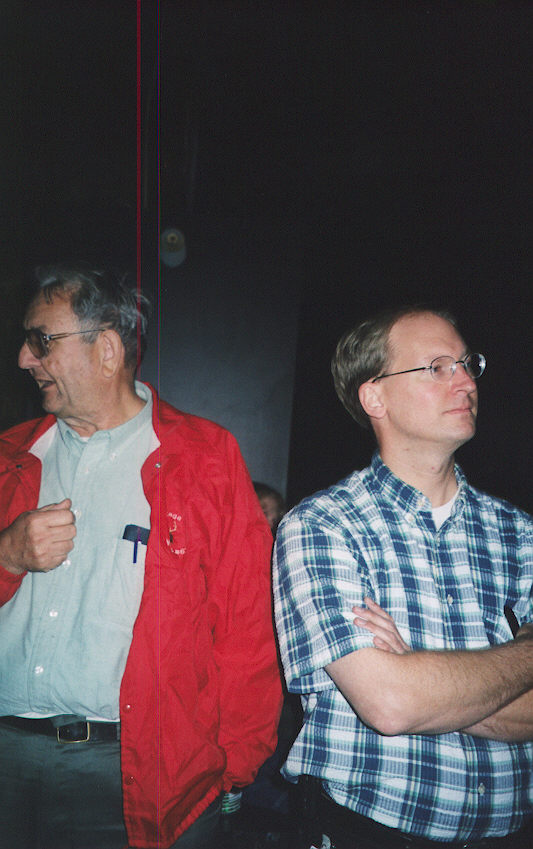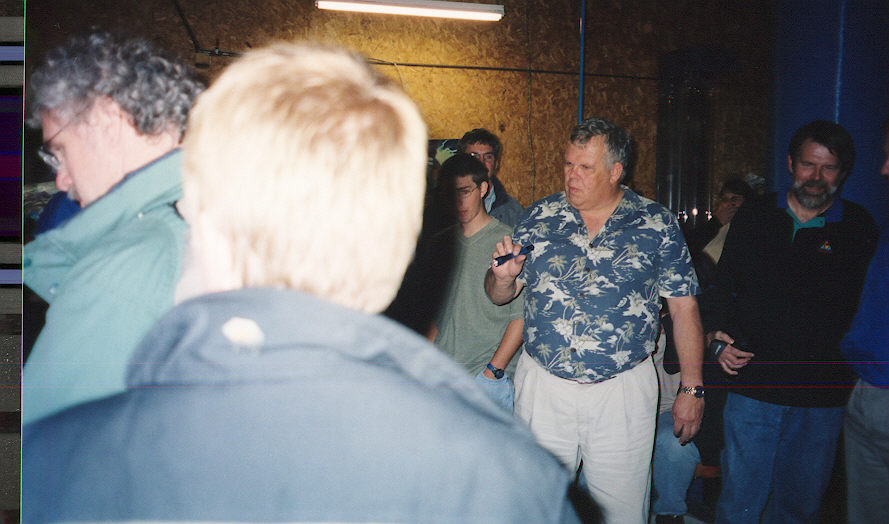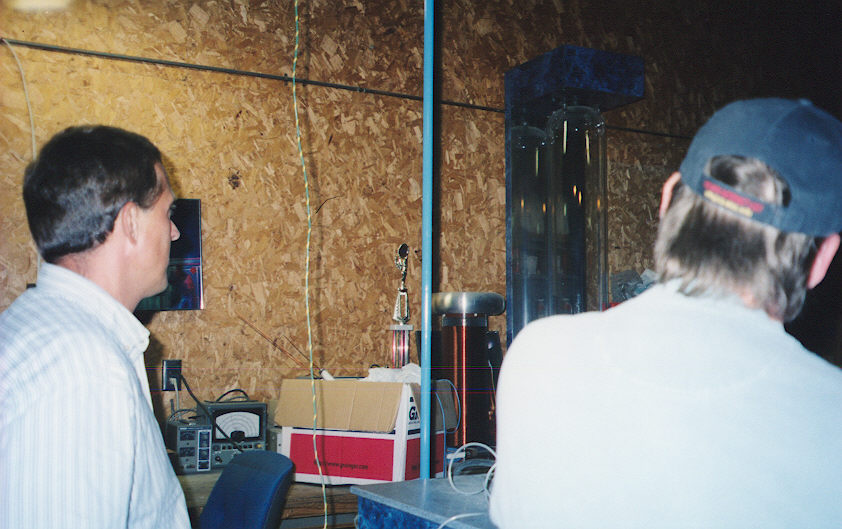
|
|
 CHAPTER 24, Inc., MADISON, WI |
- Home
- Meetings
Schedule - Meeting
Minutes - Chapter
By Laws - Chapter
Officers -
Technical
Documents -
EAS
Info -
Chapter
Archives - Sustaining
Members -
Broadcasters
Clinic - DTV for
Consumers - Links
SBE Chapter 24 Special Event
Resonance Research Corporation Open House
By Vicki W. Kipp, Chapter 24 Special Event Coordinator
Photographs by Jim Hermanson, Mike Norton, and Vicki W. Kipp
Resonance Research Corporation W11870 Shadylane Road, Baraboo WI 53913
www.resonanceresearch.com
Wednesday, September 20, 2000


Above photos by Jim Hermanson


Above photos by Mike Norton
| Getting There |
|
When WISC-TV engineer Steve Paugh called to tell me about an open house at Resonance Research Corporation, it seemed like a great opportunity to hold a Chapter 24 special event. Steve had read about the open house in the amateur radio journal Badger State Smoke Signals, edited by radio engineer Ken Ebneter. |
|
On Wednesday, September 21, 2000, members of Chapter 24 assembled at WISC-Channel 3. We used a set of General Electric PCS two-way radios to communicate between the two vehicles driving to the event. Channel selection was cleared with frequency coordinator Tom Smith. We drove 46 miles from Channel 3 to Resonance Research Corporation in Baraboo. As is the tradition for any special event that I plan, we started our trip with less than ideal weather conditions. Tumultuous gray clouds loomed and big rain drops fell as we began our trip. Just as the fog had lifted during the Lambeau Field HDTV truck special event last fall, the clouds began to lighten by the time we reached Middleton, and we were pleased to see several rainbows. In fact, the engineers in my vehicle observed a double rainbow. |
|
In the absence of an open house, it would be very easy to drive by Resonance Research Corporation without noticing their building. The facility is located at E11870 Shady Lane Road in rural Baraboo, very close to the International Crane Foundation. Resonance Research Corporation is nestled in a wooded residential and agricultural zone. There is no business sign posted by the road. From Shady Lane, all you see is a fire number, a ‘No Trespassing’ sign, and a gravel driveway. If you are able to locate the address, you will find a large forest green metal pole building which houses Resonance Research Corporation, and also serves as a residence for its owners, Mr. And Mrs. D.C. Cox. |
|
All of the science demonstrations on display at the open house have a final destination of a science center in Detroit, Michigan. Another set of the same science demonstrations is already on display at the Discovery World Museum in downtown Milwaukee. |
|
In conclusion, by attending the open house at Resonance Research members of Chapter 24 were able to enjoy vivid science demonstrations first hand. I think that everyone in our group learned something new. The tour of Resonance Research Corporation was followed by a visit to Culvers Frozen Custard in Baraboo. |
Jacob's Ladder Climbing Arc Display
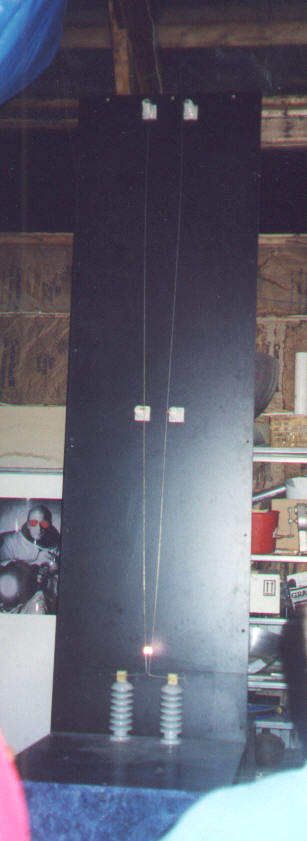 |
| Commonly seen in older science fiction movies such as Frankenstein, thedramatic looking high voltage arc of the Jacob's Ladder travels upward between two wires. The arc, which is a plasma of hot ionized gas, grows longer as it climbs up the wires. |
| For the operation of Jacob's Ladder, a transformer generated arc of ionized plasma strikes at the small gap at the bottom of the rods, which is the point of lowest breakdown voltage. The heated plasma arc climbs up the diverging rods. Even when the arc reaches a width on one inch or greater, it still provides an easier path for the current to follow than the surrounding air. It works on the principle that the ionized air in the arc is at a lower resistance than the air around it and also the principle that hot air rises. Warm air pushes the arc up the ladder. The arc's climb is also affected by the expected ‘high leakage' or reactance curve of the transformer. For as long as Paschen's Law will allow, the transformer arcs electricity across the bottom of the two wires. Paschen's Law states that the breakdown voltage is constant as long as the product of gas density and gap length is constant. Once the arc is established, the current in the arc will increase to the transformers preset limit. The arcs heat causes increasing resistance. We might expect that the transformer would try to decrease the voltage as the current increases. However, just above the arc there is a path that the transformer can easily maintain and which will lower its current. The arc climbs until the gap between the rods becomes too great. At the pinnacle of the two-rod course, the arc has reached the upper limits of the transformer's power. Arc current is very low at the crest of the rods, and so the arc extinguishes only to re-ignite at the base of the two rods. |
| Despite the ease of acquiring the two major parts of the Jacobs Ladder, caution should be exercised if you decide to build your own Jacob's Ladder. |
| The construction of a Jacob's Ladder is not terribly complex. The climbing arc display only requires a high voltage power source (such as a DC-AC inverter using a television set flyback transformer) and a pair of metal rods arranged in a V configuration on an insulated and fireproof stand. Despite the ease of acquiring the two major parts of the Jacobs Ladder, caution should be exercised if you decide to build your own Jacob's Ladder. The first concern is the dangers associated with high voltage applications. Another issue is that a Jacob's Ladder (and Tesla Coils, also) are broadband RF sources when operating. The Jacob's Ladder could potentially cause interference to radio, TV, cellular phone, cordless phone, and other communications equipment. There are unconfirmed rumors of the FCC tracking down and issuing fines to people who cause such interference. So it goes without saying, that you should proceed with caution if you construct your own Jacob's Ladder. |
Plasma Globe
|
Tom Smith examines the plasma globe Plasma streamers in the dark |
|
The Plasma Globe setting on a pedestal showed bright blue plasma streamers over a dark background. Trekkies may recognize the plasma globe from when it appears behind the heads of the "Borgs" in Star Trek. After admiring the bright streamers, the next logical thought for most engineers would be, "How does it work?" Further research yielded an explanation. |
|
Inside the plasma globe, electrons are traveling from the electrode to the outer surface and there is also an oscillating electromagnetic field present. This electron motion is required to generate the plasma. Plasma is defined as an electrically neutral gas that is intensely ionized with charged particles such as electrons and ions. When electrons separate from a parent atom or molecule, that atom or molecule becomes an ion. The negatively charged electron and the positively charged ion move about within the plasma, thus changing the local characteristics of the electromagnetic field. This change along with the oscillating electromagnetic field from the electrode will excite ions, molecules, and atoms. Upon becoming excited, these particles (charged or uncharged) will swiftly radiate photon (light) energy. The photon energy is what makes plasma so visible. The overall appearance of the plasma globe is determined by the characteristics of how the electromagnetic fields combine. While observing the plasma globe demonstration, one might wonder what determines the appearance of the bright blue streamers. It is actually the pressure in the globe that decides the characteristics of the streamers. The distinction should be made that the pressure inside of a science demonstration plasma globe is significantly higher than the pressure in most plasma chambers used by scientists for experiments. It is essential that pressure within a plasma globe be quite high in order to see the streamers. Due to the tremendously high pressure, the plasma gets hot when it is generated. Based on the principles that hot air rises, the hot plasma streamers tend to move up the side of the globe. The hot region of plasma is highly conductive, and so the streamers remain intact until broken by instability. The pressure in the globe is very important for the success of the plasma globe display. If the globe pressure is too high, the potential of the electrode will not be sufficient for the electrons to generate plasma and there will be no streamer. The result would be a dark globe with no light. Conversely, if the globe pressure is too low, the "fluid" effects of the streamers will be absent. The globe would be illuminated overall with a low intensity light, but it would not have any streamers. |
Van de Graaf Generator
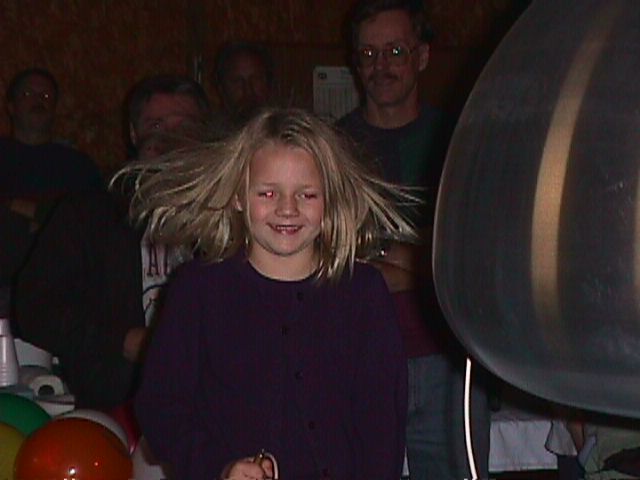
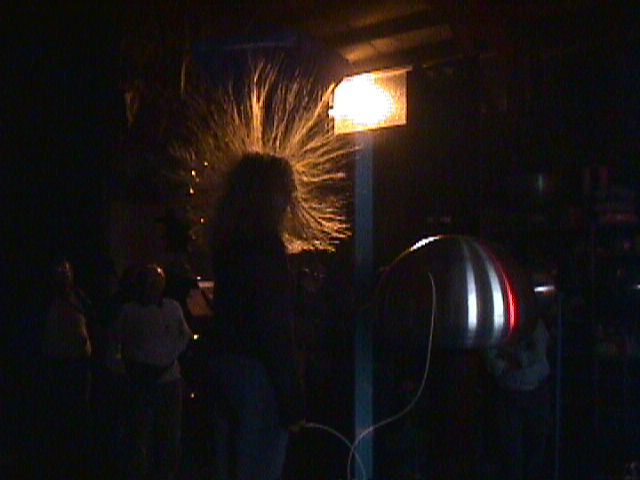
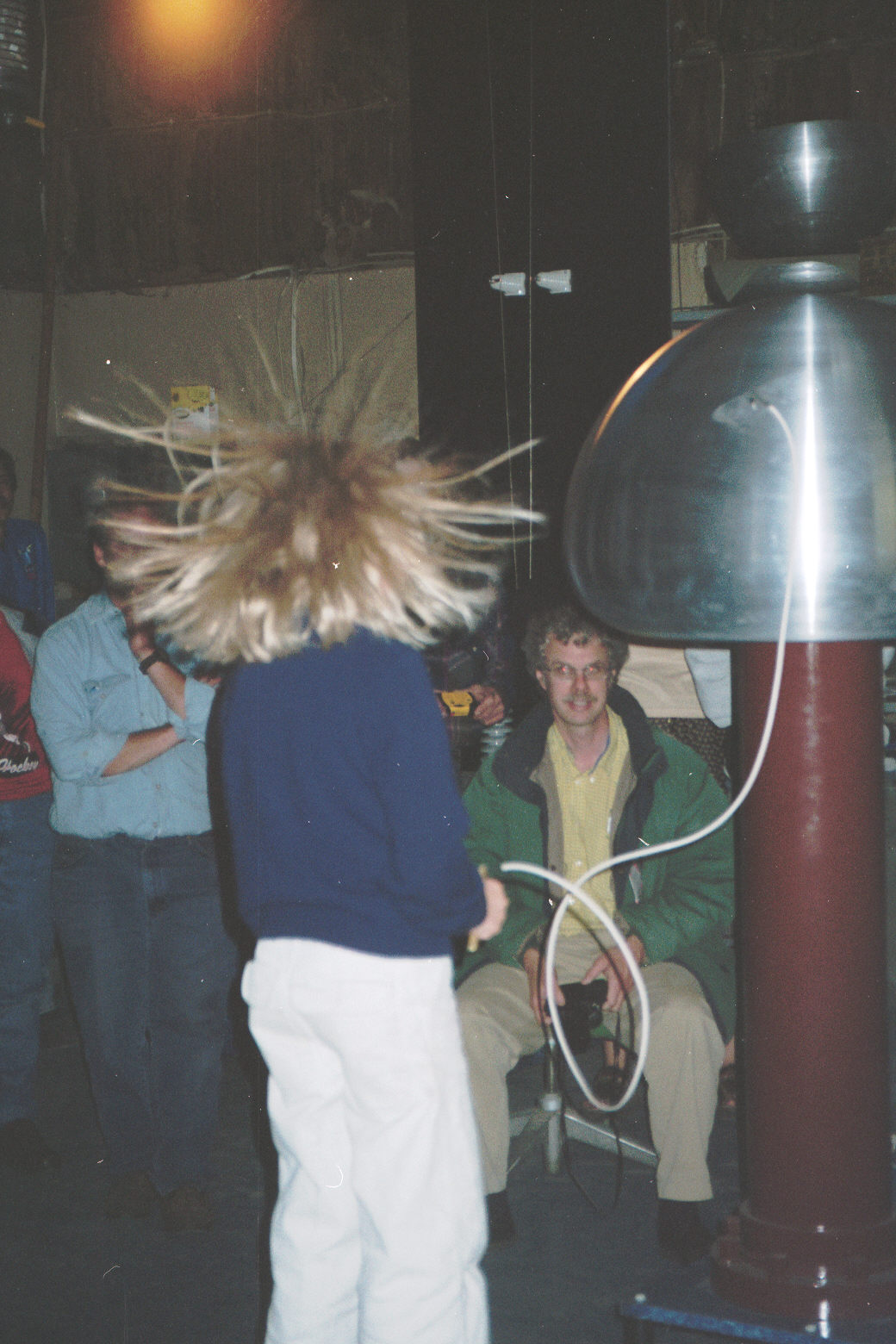
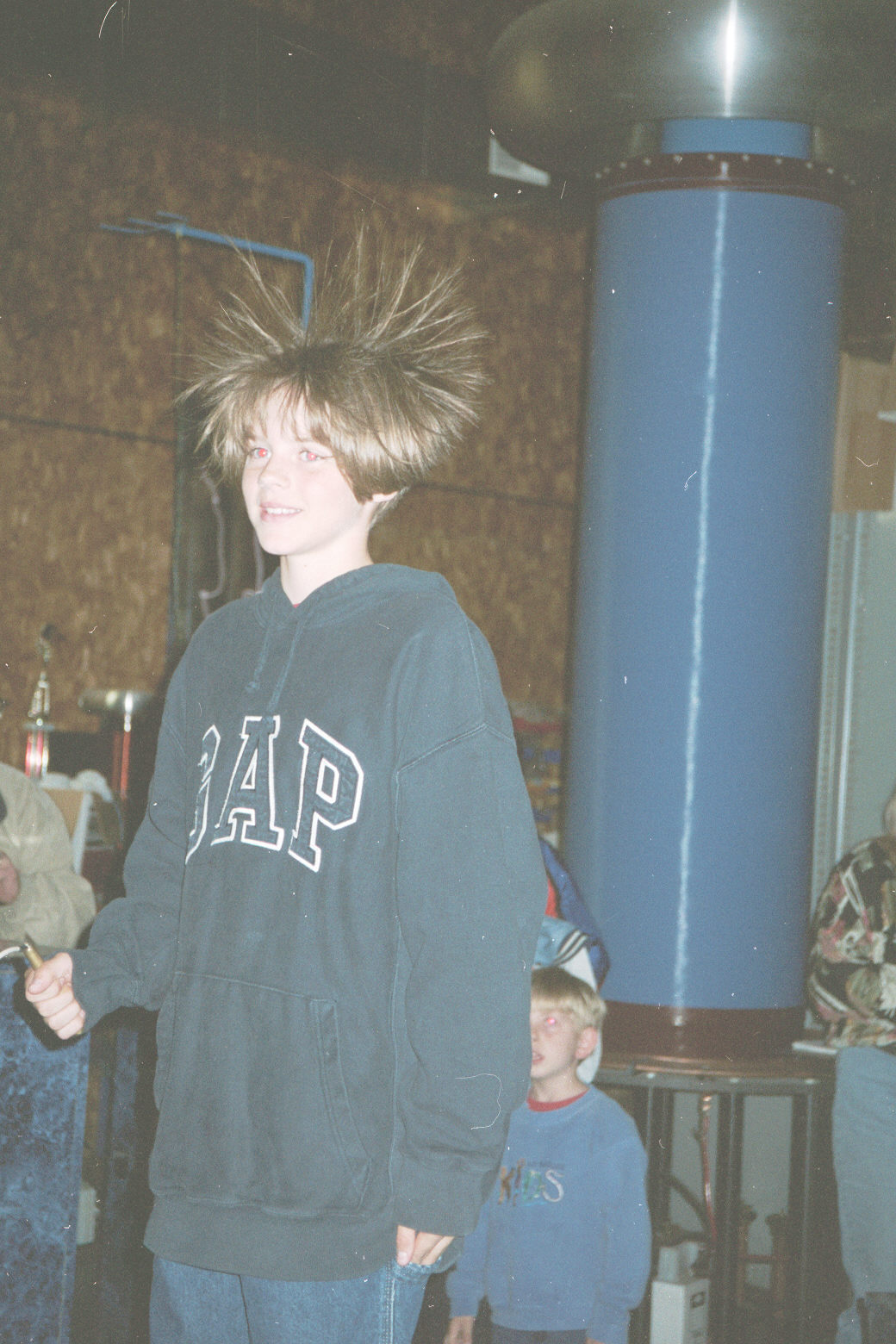
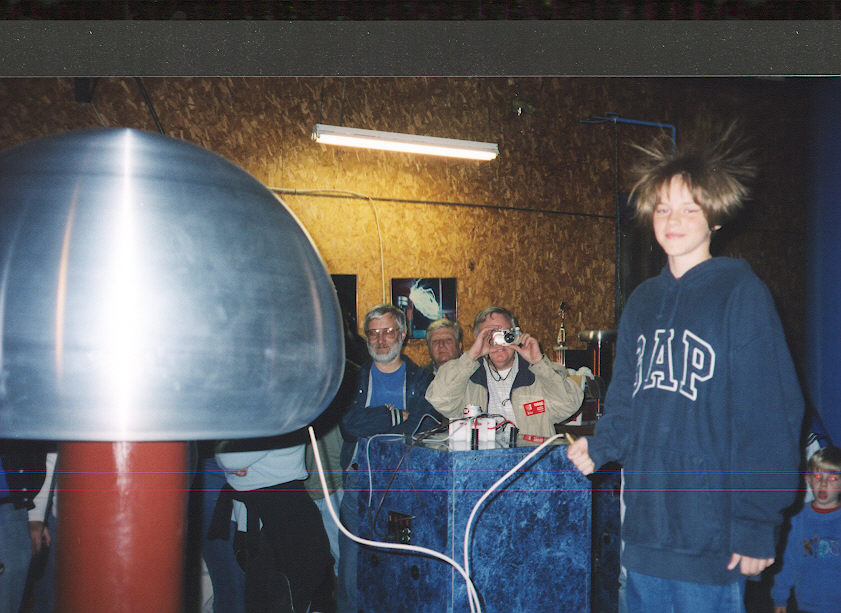
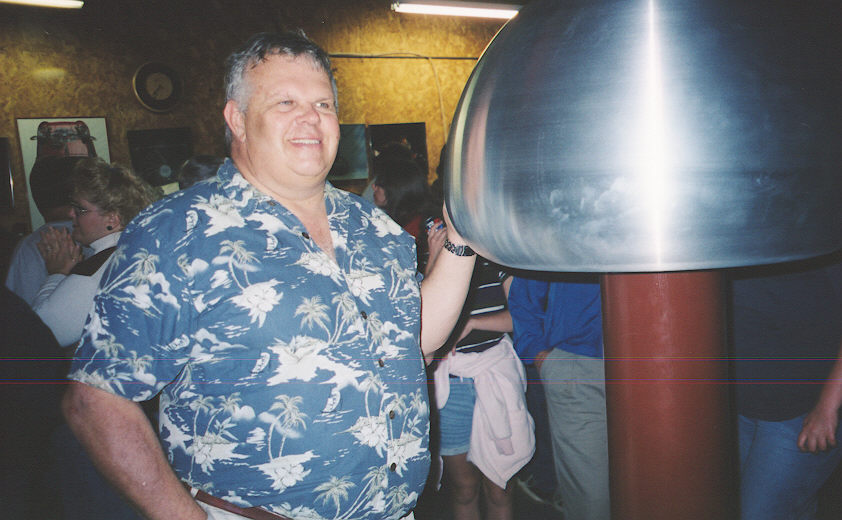
|
Invented by American physicist Robert Jemison Van de Graaf in the early 1930s, the Van de Graaf generator is a high-voltage electrostatic device that serves as a type of particle accelerator. The generator is used for producing a very high electrostatic potential. It produces this potential by moving an insulated-fabric belt inside of a column to convey a charge into a smooth, spherical, well-insulated metal dome. The dome increases in potential until an electric breakdown occurs or until the load current balances the charging rate. As the charge builds up on the dome, the electricity seeks a way to ground itself. The urgency for grounding occurs because the dome is collecting a lot of negative charges that want to get away from each other. The charges will jump to any conducting object near the metal dome. For this demonstration, we would witness a human body being used as a conductor for the static electricity generated by the Van de Graaf generator. To demonstrate, DC Cox asked a volunteer from the audience to stand on an insulated platform several feet from the generator. It is essential that the demonstrator stand on a platform insulated from ground so the electricity would not just ground itself before the demonstration could occur. If too much static electricity is lost to ground, not enough electricity will go through the hair. Before the generator was powered up, the volunteer was asked to hold on to a conductive rod connected to the generator by a cable. The volunteer could not remove her hand from the conductive rod once the generator was turned on without receiving a shock. The generator was turned on and the volunteer's hair began to rise. The longer the generator ran, the higher her hair stood. The negative charges from the Van de Graaf generator accumulated on the volunteer's skin and hair. The electrons in the hair repel each other, causing the hair strands to try to space themselves far apart from each other. When the charging period had ended, DC Cox used a discharge electrode to remove the charge on the generator before the girl released the conductive rod. |
Plasma Tube
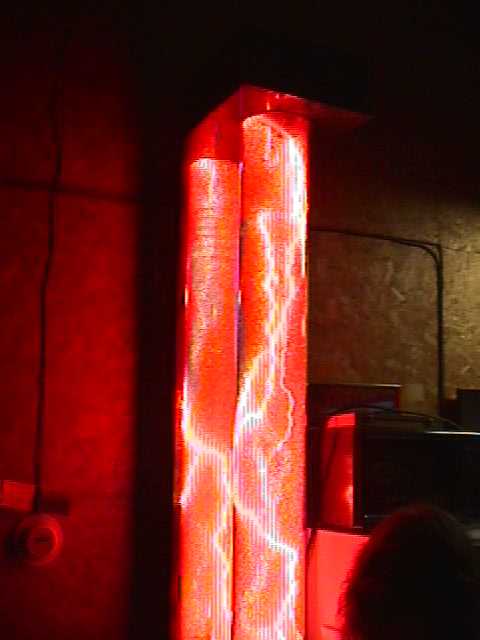
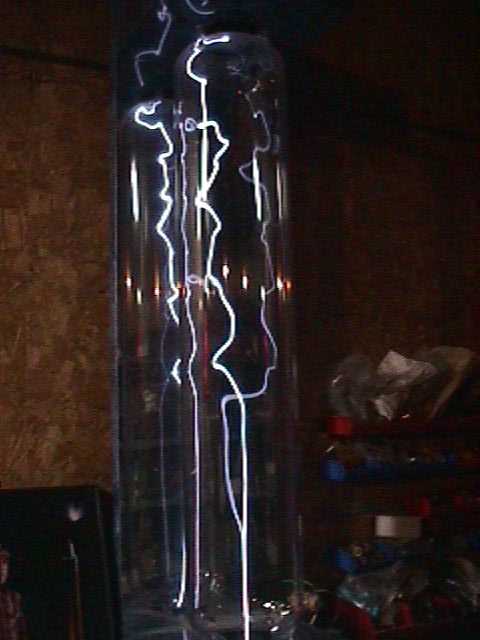
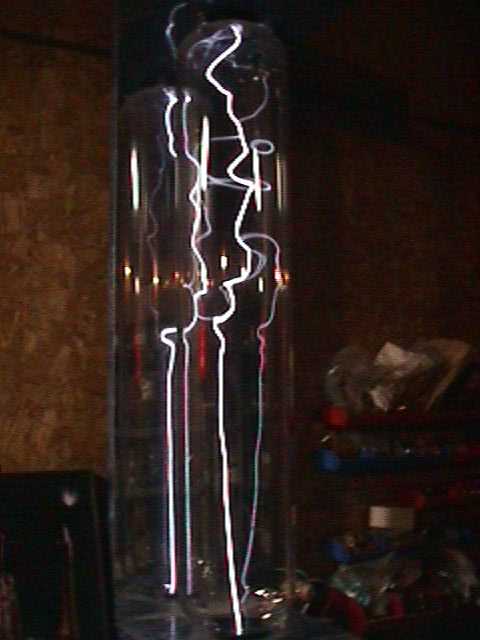
|
Aurora Borealis Tube Display |
| A plasma tube is a vacuum tube containing colored gasses that are influenced by an external magnet that a person holds up to the tube. The plasma tube contains high voltages. Vivid streamers of electrified plasma demonstrate what electric discharges look like at various gas pressures. Plasma is the fourth state of matter. With a solid, liquid, or gas, electrons are tightly bound to an individual atom. However, electrons in a plasma can roam freely from atom to atom, carrying electricity. |
Tesla (Resonance) Generator
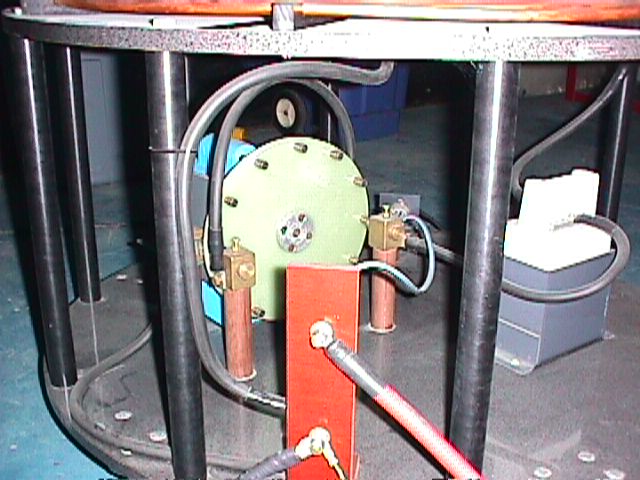
Above: Wheel that generates the arcs while stopped.
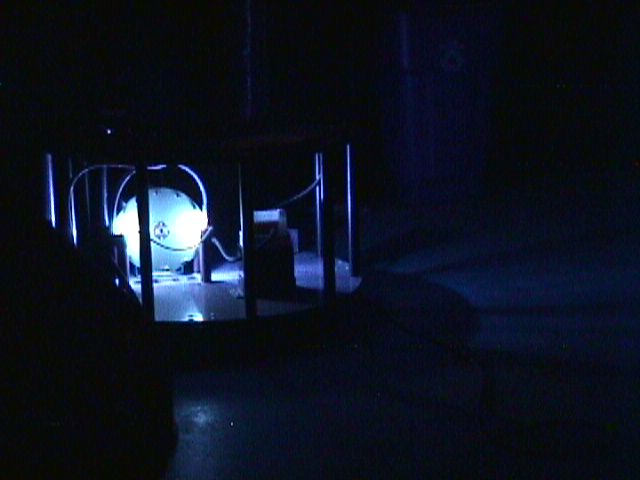
Above: Wheel that generates the arcs while in operation.
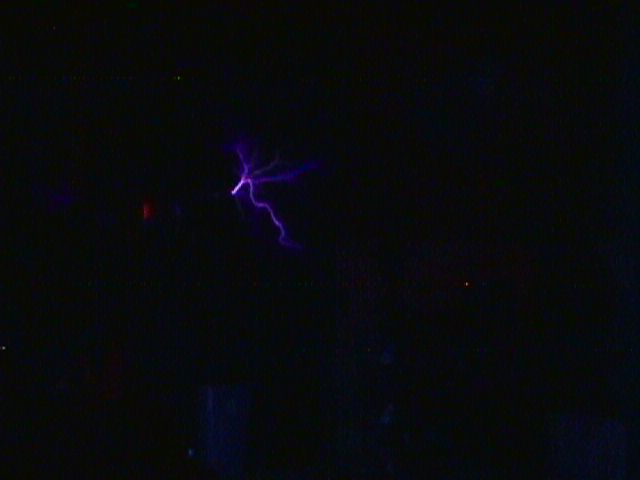
Above: The plasma arcs are beginning to build.
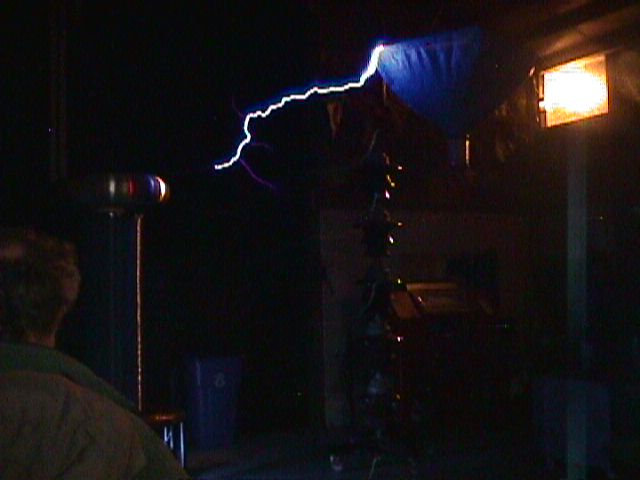
Above: The plasma arcs are more pronounced, reaching about 4 feet.
Resonance Tower/ Tesla Coil
|
Serbian-American inventor Nikola Tesla is credited with inventing the telephone repeater, the rotating magnetic field principle, the polyphase alternating-current system, the induction motor, alternating-current power transmission, the Tesla coil transformer, wireless communication, radio, and fluorescent lights. Tesla built on Thomas Edison's discovery of Direct Current electricity to create alternating current or AC applications. Tesla was not a promoter of his discoveries, but rather he was a pure scientist. George Westinghouse joined Tesla, and together they built the first power plant. The power that we draw in our homes today resulted from Tesla's earlier work. Invented in the 1890's, Tesla coils were originally meant for use in the wireless transmission of electricity. Tesla coils are among the most effective means of producing ultra-high voltages. Today, Tesla coils are widely used in radios and television sets. At Resonance Research, we saw a demonstration of the Tesla coil. The larger Tesla coil in the facility was capable of emitting a 25 foot shock when charged with 6 million volts of electricity. This performance is reserved for when the Tesla coil is set up in an open outdoor area. Tesla Coils are actually air-cored transformers that convert electricity into a high frequency, high voltage form, and then pump that converted energy into the air. If there is a conductive, grounded object near the Tesla coil, then the coil will discharge to the object instead of discharging into the air. If you closely at the picture, you may notice that there are many separate but similarly shaped arcs layered vertically, rather than one solid arc. This is because arcs from a Tesla Coil are not continuous. The arcs usually pulse hundreds of times each second. Each electrical pulse ionizes and heats the air that it travels through. The ionized and heated air is more conductive than the surrounding cool air. Therefore, later electrical pulses tend to travel through the same heated trail of air. Since heated air rises and the arcs are not continuous, each separate electrical pulse causes the air that it travels through to send out light from a slightly different location. Although the high frequency, high voltage energy may seem intimidating, it is considered a reasonably safe form of electricity. This energy follows the skin effect, and it has a very low current. It is reported that Nikola Tesla would do demonstrations where he would hook himself up to the Tesla coil and have sparks rushing from his hair and fingertips. |
Electromagnetic Can Crusher
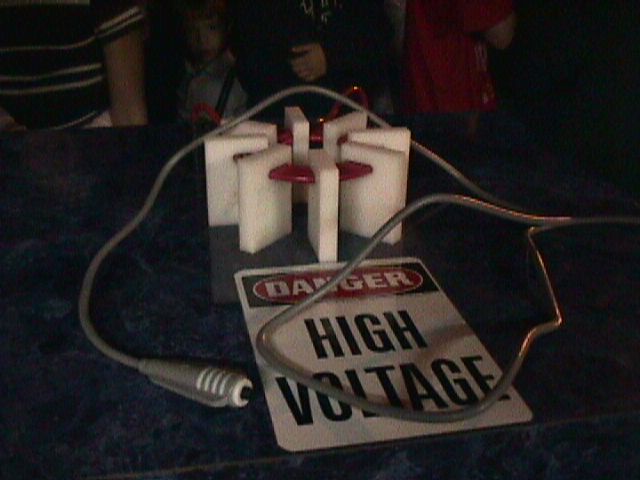
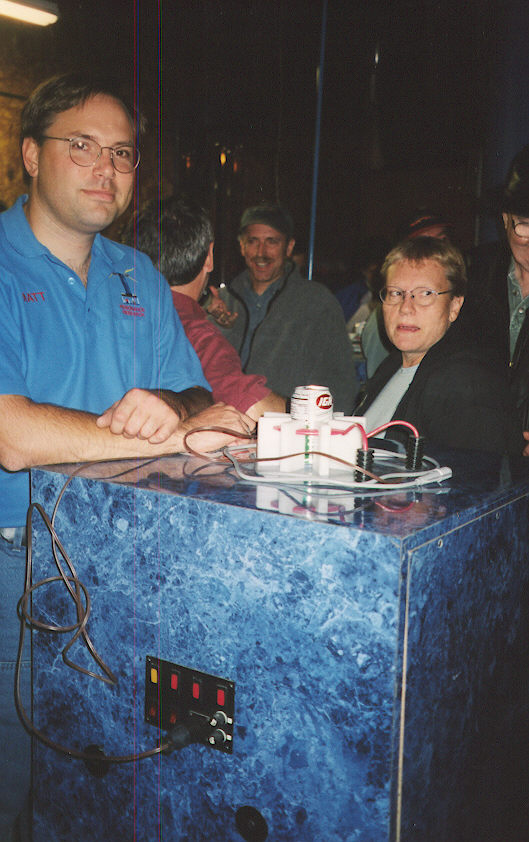
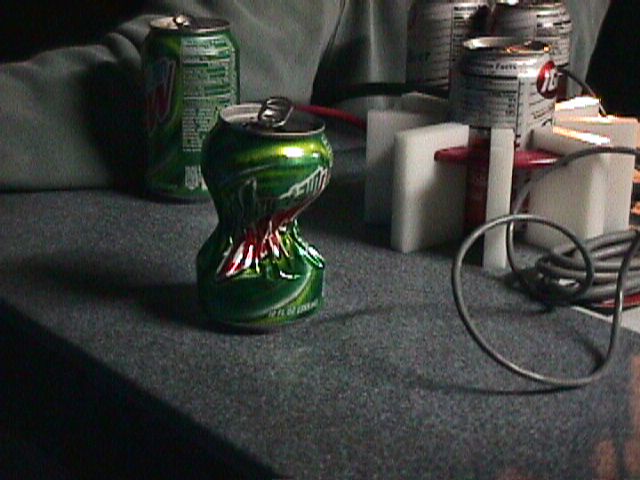
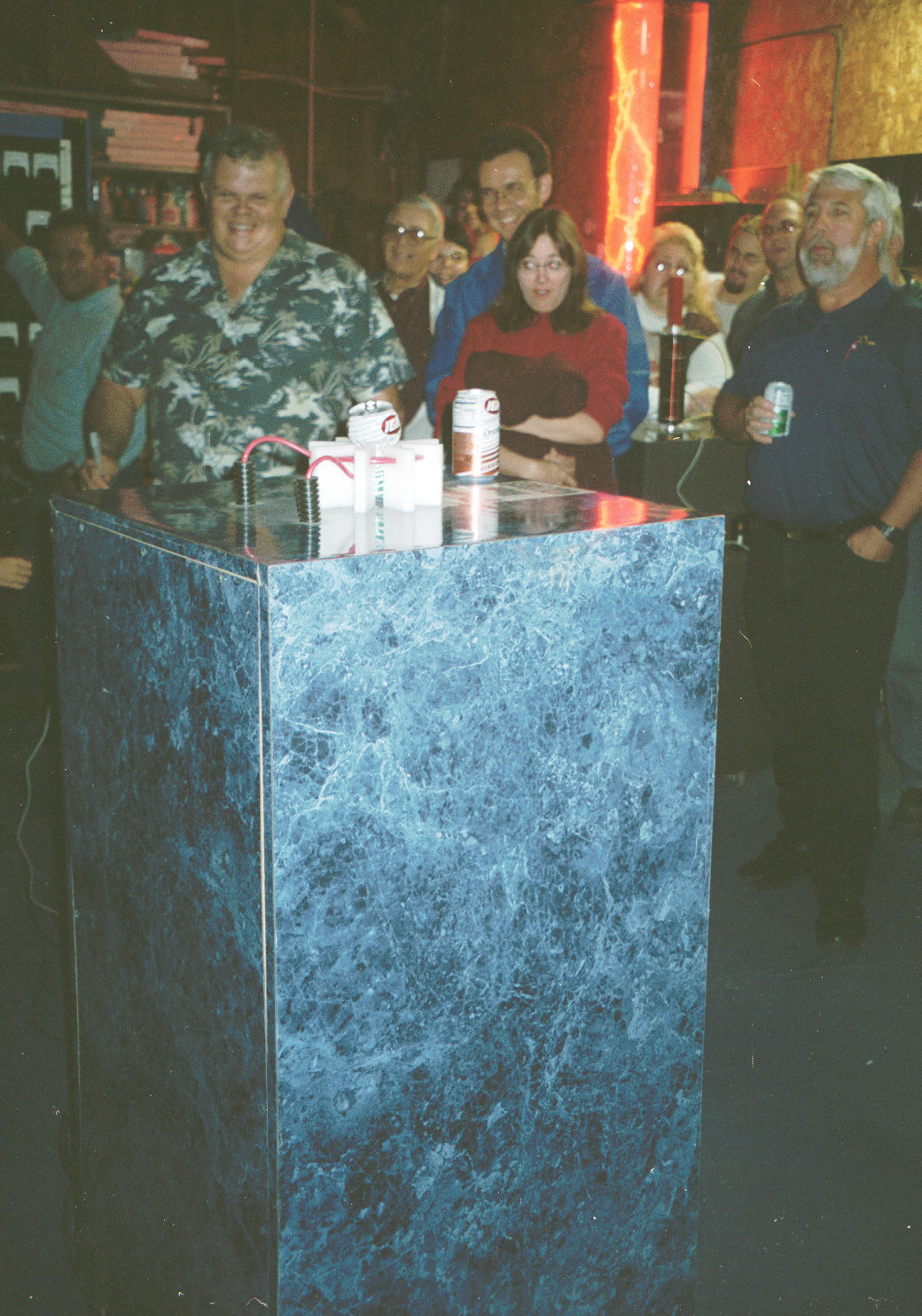 |
|
The electromagnetic soda can crusher may not be entirely practical, but it sure is an impressive display of electromagnetism and capacitors. The can crushing effect results from the repulsion of two magnetic fields. Initially, a very large 50 microFarad 25 kilovolt capacitor is charged to 10 kilovolts. There is a direct relationship between the voltage level and the crushing force. Once the desired voltage is reached, a spark gap connects a small coil to the very large capacitor. As a frame of reference for the size of the capacitor, consider that the capacitor took up one quarter of the space in the marble column in which it is enclosed. The coil is a thick wire which circles the center of the soda can. The can crusher built by Resonance Research Corporation has timing controls for push button charging and firing. When the spark gap switch fires, the capacitor discharges a tremendous amount of current through the coil (roughly 100,000 amperes.) This current discharge creates a magnetic field around the coil. Flux lines pass through the cross section of the can causing current to be induced and to flow around the can. The induced current creates its own magnetic field which opposes the magnetic field from the coil. Between the two magnetic fields, the can is now subject to one magnetic field pushing inward on the can and one magnetic field pushing outward on the coil. When the force becomes strong enough, the can is crushed. Steam emitted from the soda can as it was crushed. |
|
SBE Chapter 24 Members Attending Special Event
Steve Paugh, Denise Maney, Dan Maney | Jim Hermanson , Ken Ebneter tube.
Steve Paugh, Jim Hermanson | Ken Ebneter, Jim Hermanson
Owner D.C. Cox in Hawaiian shirt | Steve Zimmerman The Society of Broadcast Engineers was well represented at the Resonance Research Corporation open house. Chapter 24 had ten members present, eight of whom were certified. Our group included Bob Dischler, Ken Ebneter, Jim Hermanson, Vicki Kipp, Dan Maney, Denise Maney, Mike Norton, Steve Paugh, Tom Smith, and Steve Zimmerman. SBE Chapter 80 members Jim Sheetz, Mark Hoenecke, Dean Andrewjeski, and student member Ian Andrewjeski also attended. |
